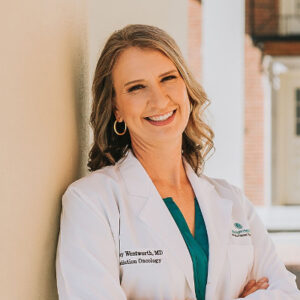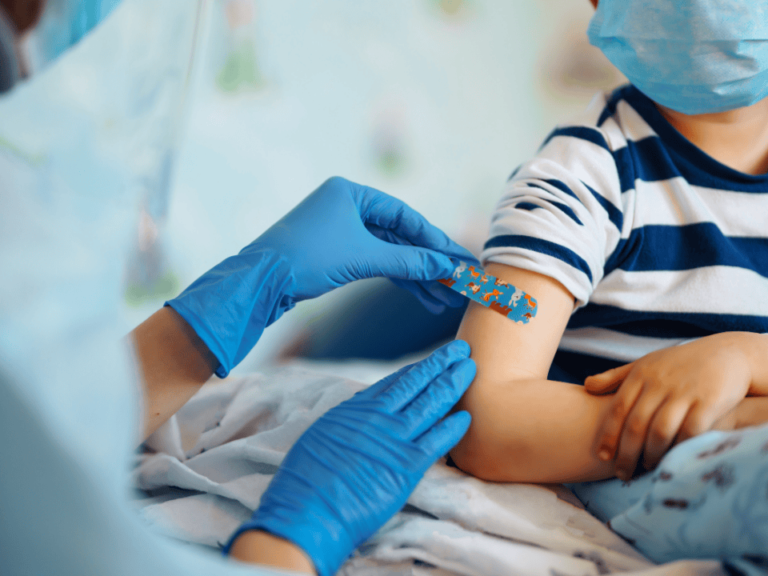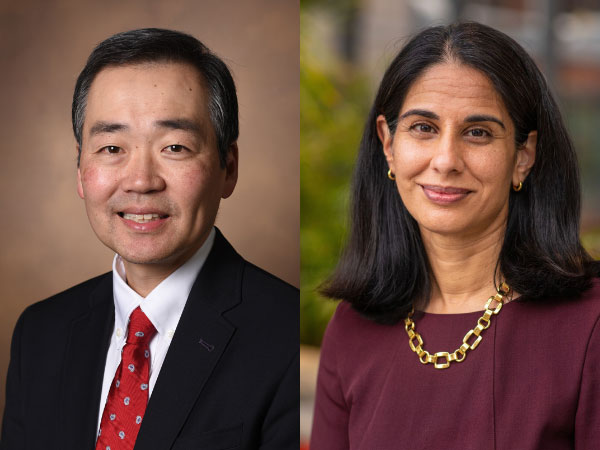The following is an excerpt, published in full in the Cancer History Project. Read the full article here.
A virtual panel, moderated by Stacy Wentworth, will take place on March 7 in honor of Women’s History Month, focusing on First Ladies Betty Ford and Nancy Reagan.
Wentworth will appear in conversation with Mirelle Luecke, MA, PhD, supervisory museum curator at the Gerald R. Ford Presidential Library and Museum, and Karen Tumulty, MBA, deputy editorial page editor and columnist, at The Washington Post.
Register now for this free virtual event.


Breast cancer history is closely tied with the treatment of the most prominent non-elected political person in the country, the First Lady.
The first account of breast cancer associated with an American president is Abigail “Nabby” Adams Smith, the beloved only daughter of John and Abigail Adams. Nabby married John Smith, her father’s secretary, while Mr. Adams was serving as ambassador to England.
After returning to the U.S. with Nabby, John Smith made and lost several fortunes, eventually ending up in near poverty on a farm in western New York. Far from the intellectual and social stimulation of her parents’ home in Quincy, Massachusetts, Nabby capably ran a large, frontier homestead. Sometime in 1810, Nabby felt a mass in her right breast.
Barriers familiar to rural patients of today—scarcity of trained medical professionals, poverty, and her own denial—prevented her from seeking treatment at first.
Despite applying hemlock paste to her breast and taking oral hemlock supplements as recommended by her local practitioner, the mass continued to grow, eventually becoming “harder with a little pink at times on the skin.” She wrote to her mother in February 1811 that she feared the mass was cancer.
Upon receiving her daughter’s letter, Abigail consulted physicians in Boston, who concurred with the prescribed hemlock treatment. As her daughter’s breast pain increased, however, Abigail began lobbying for her immediate return to Quincy, a grueling three-hundred-mile journey.
Nabby finally arrived in June 1811 and consulted several local physicians. All again agreed that observation was best, reserving surgery only if the mass became “enflamed.” Satisfied and desperately wanting to avoid a frightening surgery, Nabby prepared to return home.
For unknown reasons, she made one last contact, writing at the end of the summer of 1811 to family friend, physician and Declaration of Independence signatory, Dr. Benjamin Rush. Dr. Rush had recently returned from a medical tour through Europe and replied to her letter through her father saying, “Let there be no delay in flying to the knife. Her time of life calls for expedition in this business.” The recommendation of a trusted family friend carried great weight, and Nabby consented to the painful surgery she had desperately wanted to avoid.
The operation took place on Oct. 8, 1811, in her parents’ home with her family present providing support. A team of Boston’s most preeminent surgeons arrived a day early and explained to Nabby and her family the horrifying procedure. The surgeon offered no alternative.
Although there is no record of the surgery, historian James Olson describes the scene based on contemporaneous accounts.
After slipping off her sleeve to expose her breast, male assistants dressed in frockcoats, belted her waist and legs to a chair. Her family restrained her shoulders and neck while the surgeon moved into place:
[He] then straddled Nabby’s knees, leaned over her semi-reclined body, and went to work. He took the two-pronged fork and thrust it deep into the breast. With his left hand, he held onto the fork and raised up on it, lifting the breast from the chest wall. He reached over for the large razor and started slicing into the base of the breast, moving from the middle of her chest toward her left side. When the breast was completely severed, [he] lifted it away from Nabby’s chest with the fork…Nabby grimaced and groaned, flinching, and twisting in the chair, with blood staining her dress and [his] shirt and pants. [He] pulled a red-hot spatula from the oven and applied it several times to the wound, cauterizing the worst bleeding points. With each touch, steamy wisps of smoke hissed into the air and filled the room with the distinct smell of burning flesh. [He] then sutured the wounds, bandaged them, stepped back from Nabby, and mercifully told her that it was over.
The operation took less than 30 minutes, but her mother and sister spent hours dressing her wounds.
She stayed with her parents for the rest of the summer, slowly recovering from the brutal procedure. She eventually returned to New York, but within a few months she developed bone pain and headaches.
Nodules eventually appeared along the mastectomy scar, and it was clear that her cancer was back. Determined to die with her family in Quincy, Nabby convinced her husband to bring her home, enduring unimaginable pain as the carriage bumped and crashed over the primitive roads.
When she finally arrived, her mother was shocked at her daughter’s emaciated appearance. Nabby died on August 9, 1813, less than two years after her brutal surgery. John Adams wrote to his friend Thomas Jefferson:
Your Friend, my only Daughter, expired, Yesterday Morning in the Arms of Her Husband her Son, her daughter, her Father and Mother, her Husbands two Sisters and two of her Nieces, in the 49th. Year of Age, 46 of which She was the healthiest and firmest of Us all: Since which, She has been a monument to Suffering and to Patience.
Stories of breast cancer treatment and (mostly) failures in women of privilege form a long ribbon through history, and we can only imagine the horror of treatment in those less fortunate.
As we now know, by the time Nabby was strapped to a chair, breast cancer cells were likely present in the rest of her body. Perhaps had she presented in 1809, when she first discovered the lump in her breast, the surgery, still incredibly brutal, may have cured her.
Instead, like so many women saddled with household responsibilities, she followed the advice available to her, using topical salves and natural treatments for years before seeking the care of a physician. As so many women before and after her, understandable trepidation surrounding the brutality of cancer treatment also likely led to denial, until the cancer finally asserted itself as a problem that could no longer be ignored.
Wentworth’s editorial continues with highlights from the breast cancer treatment of:


- Betty Ford, who received a radical mastectomy in 1974. “Lying in the hospital thinking of all those women going for cancer checkups because of me, I’d come to recognize more clearly the power of the woman in the White House. Not my power, but the power of the position, a power which could be used to help,” Ford said in her 1978 autobiography, The Times of My Life.


- Within a few short weeks in 1974, the science of breast cancer changed, and Second Lady Happy Rockefeller received a modified radical mastectomy.


- In 1987, Nancy Reagan also received a a modified radical mastectomy, which caused a spike in breast cancer screenings. Physicians, women’s groups, and advocates questioned her decision to undergo a mastectomy.
This column features the latest posts to the Cancer History Project by our growing list of contributors.
The Cancer History Project is a free, web-based, collaborative resource intended to mark the 50th anniversary of the National Cancer Act and designed to continue in perpetuity. The objective is to assemble a robust collection of historical documents and make them freely available.
Access to the Cancer History Project is open to the public at CancerHistoryProject.com. You can also follow us on Twitter at @CancerHistProj, or follow our podcast.
Is your institution a contributor to the Cancer History Project? Eligible institutions include cancer centers, advocacy groups, professional societies, pharmaceutical companies, and key organizations in oncology.
To apply to become a contributor, please contact admin@cancerhistoryproject.com.











